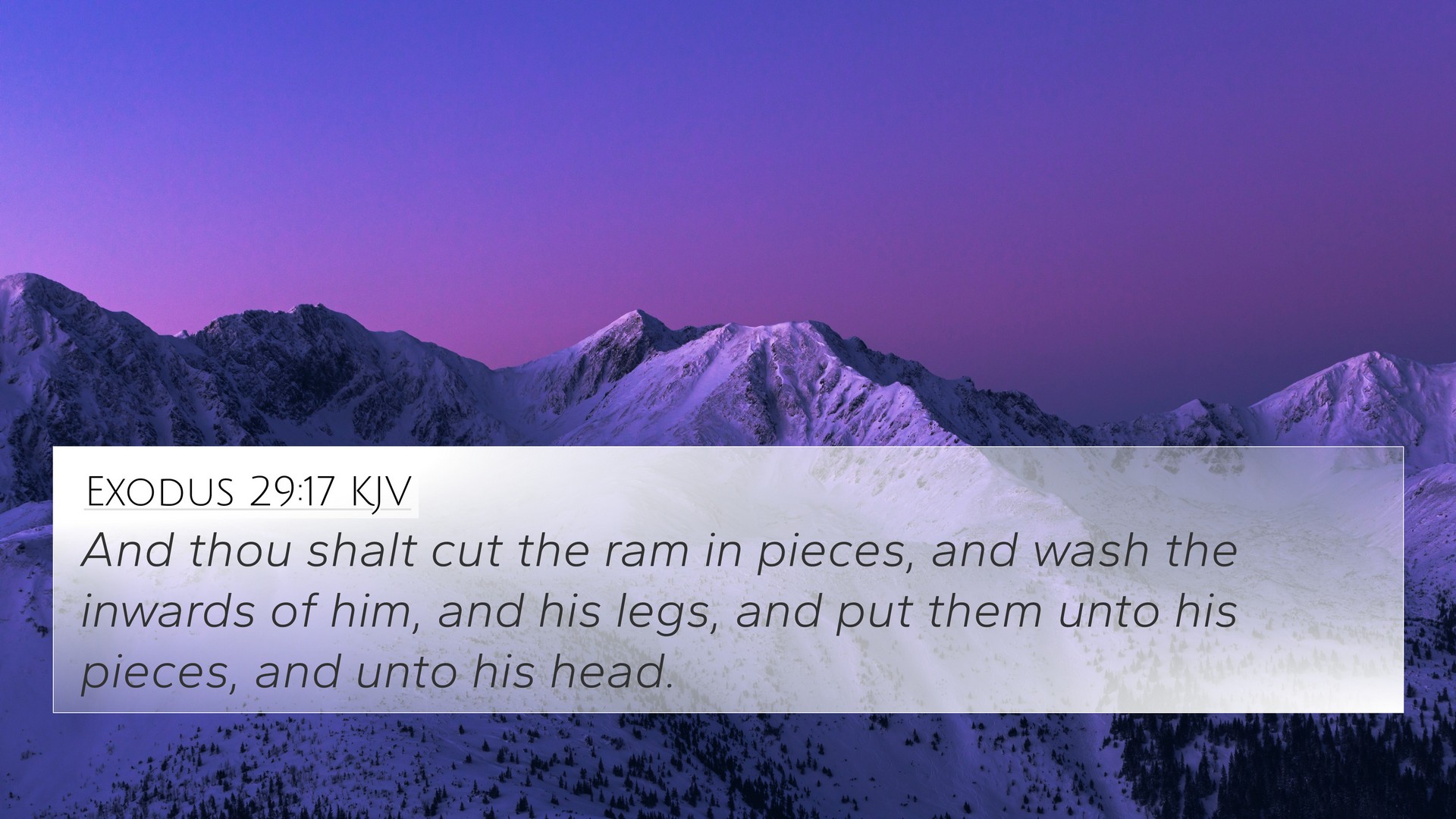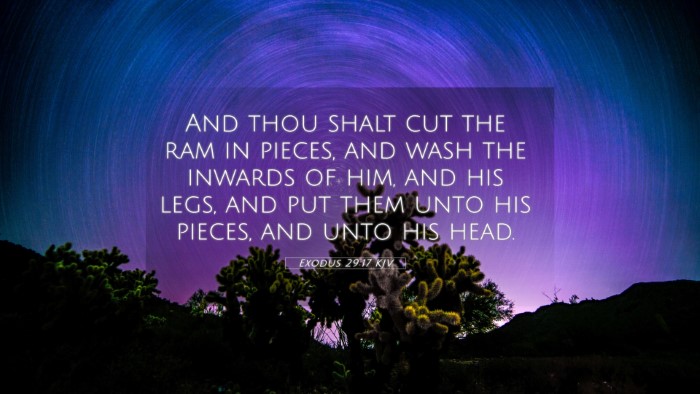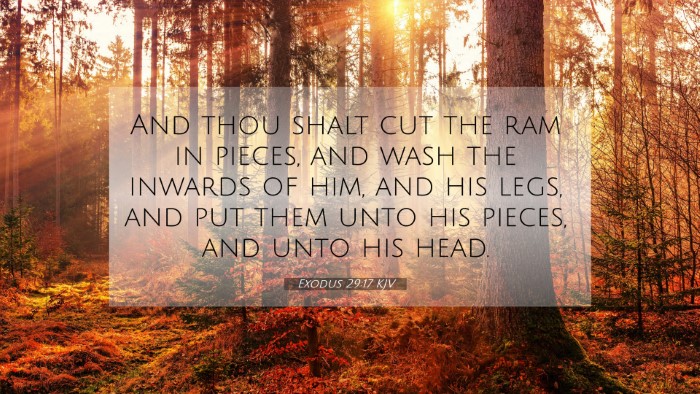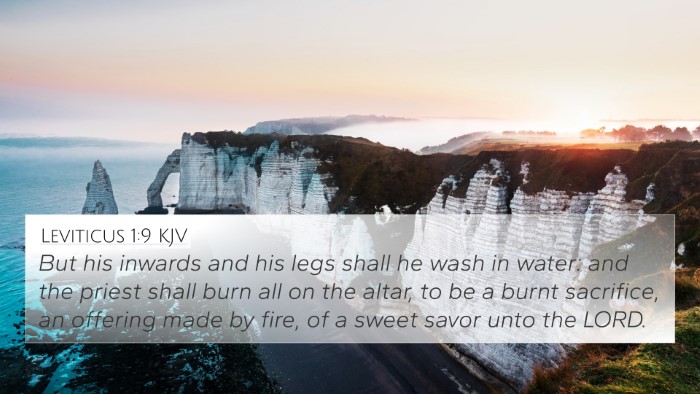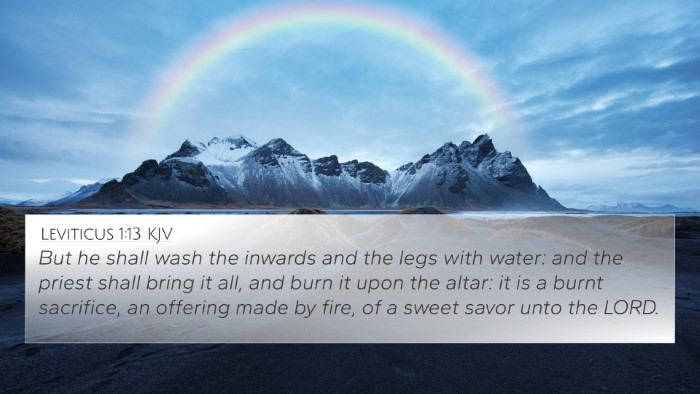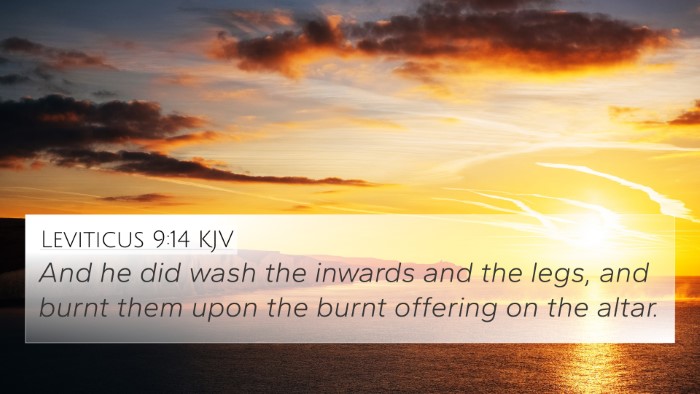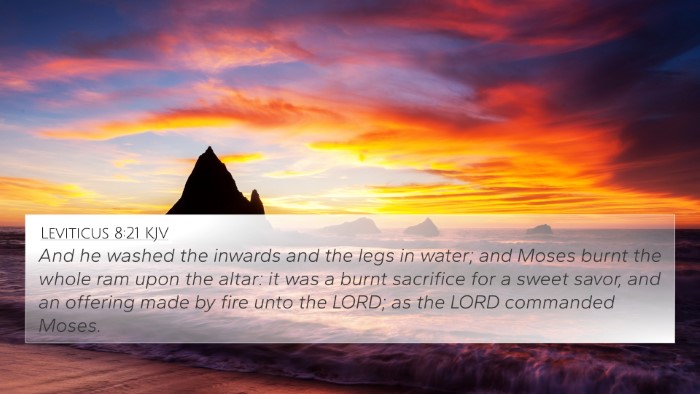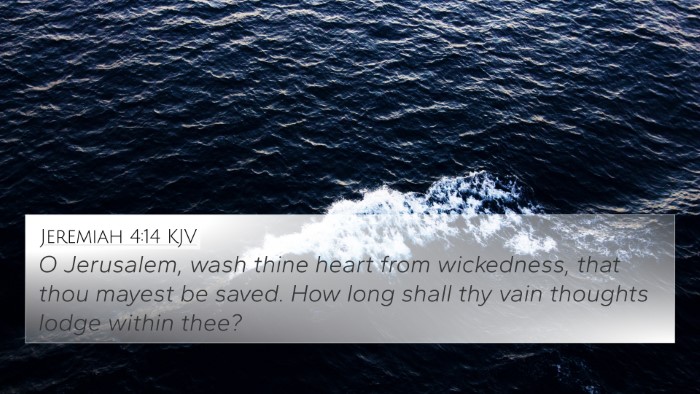Understanding Exodus 29:17
Exodus 29:17 states, "And you shall cut the ram into pieces, and wash the entrails and the legs, and put them with his pieces and with his head." This verse is part of the detailed instructions given to Moses regarding the consecration of Aaron and his sons as priests. It emphasizes the ritualistic aspects of the Old Testament sacrificial system and the meticulous care with which God commands His worship to be conducted.
Commentary Insights
Insights from notable public domain commentaries shed light on the significance of this verse:
- Matthew Henry: He highlights that the act of cutting the ram into pieces and washing certain parts symbolizes the necessity of purification and preparation for approaching God. This ritual points to the seriousness of sin and the need for atonement, reflecting the core theme of Old Testament sacrifices.
- Albert Barnes: Barnes discusses the ritual as a preface to the sacrificial system, noting that every detail was significant in fulfilling God's command. He explains that the instruction to separate certain parts of the ram signified God's holiness and the requirement for a perfect offering, which ultimately prefigures the sacrifice of Christ.
- Adam Clarke: Clarke elaborates on the nature of the ceremonial laws, suggesting that these were not arbitrary but rather pointed toward a greater truth. The act of washing symbolizes the purification required before God, establishing parallels with the New Testament's teachings on cleansing and sanctification through Jesus.
Thematic Connections
This verse connects deeply with various themes prevalent throughout the Bible, providing an avenue for Bible verse cross-referencing. The specifics of the sacrificial laws reflected in Exodus have numerous links to the broader biblical narrative, especially regarding themes of sacrifice, purification, and atonement.
Bible Cross-References:
- Leviticus 1:6-9: Discusses the process of offering animals, showing continuity in sacrificial practices.
- Hebrews 9:22: States that “without the shedding of blood there is no forgiveness,” emphasizing the importance of sacrifices for atonement.
- Romans 12:1: Calls believers to present their bodies as living sacrifices, linking Old Testament practices with New Testament worship.
- 1 Peter 1:19: Refers to Christ as the Lamb without blemish or defect, connecting the sacrificial system to Jesus’ ultimate sacrifice.
- Isaiah 53:5: Speaks of the suffering servant, foreshadowing the purpose of sacrificial offerings.
- John 1:29: John the Baptist identifies Jesus as “the Lamb of God,” reinforcing the sacrificial imagery established in the Old Testament.
- Exodus 12:21-23: Refers to the Passover lamb, illustrating the necessity of blood for protection and deliverance.
- Hebrews 10:1-4: Discusses the inadequacies of the sacrificial system, highlighting the transition to Christ’s sacrifice.
- Colossians 2:16-17: Suggests that the law and its ceremonies were shadows of what was to come in Christ.
The Importance of Understanding Exodus 29:17
The detailed instructions in Exodus 29:17 about the ram's sacrifice have profound theological implications. They not only underscore the importance of obedience in worship but also establish a foundation for understanding the nature of God’s relationship with humanity. This verse, alongside its cross-references, offers insights into God's holiness, the seriousness of sin, and the foreshadowing of Christ's ultimate sacrifice.
Cross-Referencing Biblical Texts
Engaging in cross-referencing Biblical texts related to Exodus 29:17 can enhance our understanding of scriptural themes. It is essential to consider how Old Testament practices reveal prophetic insights into the New Testament teachings and vice versa. By studying these verses, one can uncover a rich tapestry of inter-Biblical dialogue that showcases the consistency of God's plan of redemption throughout history.
Conclusion
Exodus 29:17 serves as more than a mere historical account; it is a vital part of understanding the overarching narrative of the Bible. By utilizing tools for Bible cross-referencing, we can better comprehend how various scriptures relate to one another, enhancing our understanding of God's word and His intentions for humanity. The meticulous nature of these offerings reminds us of God's holiness and the intrinsic need for purification, atonement, and ultimately, the sacrifice of Jesus Christ.
